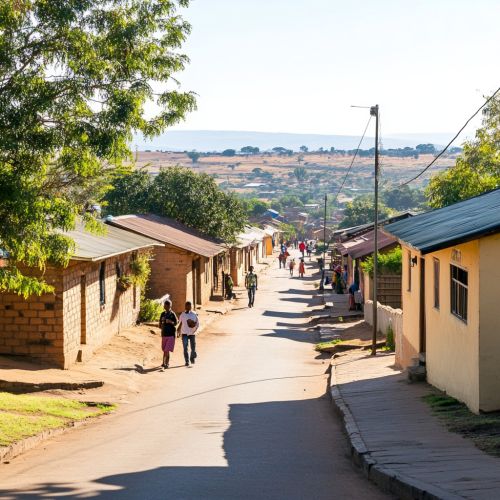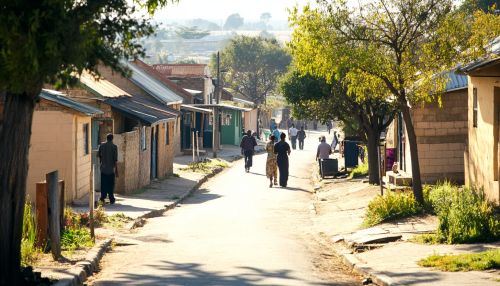Apartheid: Difference between revisions
(Created page with "== Introduction == Apartheid was a system of institutionalized racial segregation and discrimination in South Africa that was implemented by the National Party government from 1948 until the early 1990s. The term "apartheid" is derived from the Afrikaans word meaning "apartness" or "separateness." This policy was designed to maintain white dominance while extending racial separation. Apartheid affected every aspect of life in South Africa, including politics, economics,...") |
No edit summary |
||
| (One intermediate revision by the same user not shown) | |||
| Line 19: | Line 19: | ||
In 1948, the National Party, led by [[Daniel François Malan]], won the general election and began to implement apartheid as official state policy. The government enacted a series of laws to enforce racial segregation and discrimination. The [[Population Registration Act of 1950]] required all South Africans to be classified by race: white, black, colored (mixed race), or Indian. The [[Group Areas Act of 1950]] assigned racial groups to different residential and business sections in urban areas, forcibly removing those who lived in the "wrong" areas. | In 1948, the National Party, led by [[Daniel François Malan]], won the general election and began to implement apartheid as official state policy. The government enacted a series of laws to enforce racial segregation and discrimination. The [[Population Registration Act of 1950]] required all South Africans to be classified by race: white, black, colored (mixed race), or Indian. The [[Group Areas Act of 1950]] assigned racial groups to different residential and business sections in urban areas, forcibly removing those who lived in the "wrong" areas. | ||
[[Image:Detail-98521.jpg|thumb|center|A street in a South African township with modest houses and people walking. The scene is peaceful and sunny.|class=only_on_mobile]] | |||
[[Image:Detail-98522.jpg|thumb|center|A street in a South African township with modest houses and people walking. The scene is peaceful and sunny.|class=only_on_desktop]] | |||
=== Pass Laws and Bantustans === | === Pass Laws and Bantustans === | ||
Latest revision as of 17:51, 18 October 2024
Introduction
Apartheid was a system of institutionalized racial segregation and discrimination in South Africa that was implemented by the National Party government from 1948 until the early 1990s. The term "apartheid" is derived from the Afrikaans word meaning "apartness" or "separateness." This policy was designed to maintain white dominance while extending racial separation. Apartheid affected every aspect of life in South Africa, including politics, economics, education, and social interactions.
Historical Background
Colonial Roots
The roots of apartheid can be traced back to the colonial era when European powers began to colonize Africa. The Dutch East India Company established a settlement at the Cape of Good Hope in 1652, marking the beginning of European settlement in South Africa. Over time, the Dutch settlers, known as Boers or Afrikaners, developed a distinct identity and language, Afrikaans. The British took control of the Cape Colony in the early 19th century, leading to tensions between the British and the Afrikaners.
Segregation Policies
Prior to the formal establishment of apartheid, South Africa had already implemented various segregation policies. The Natives Land Act of 1913 restricted black South Africans from owning land outside designated areas, which constituted only 7% of the country's land. The Urban Areas Act of 1923 further segregated residential areas, limiting black South Africans to certain urban locations. These policies laid the groundwork for the more comprehensive system of apartheid.
Implementation of Apartheid
National Party and Apartheid Legislation
In 1948, the National Party, led by Daniel François Malan, won the general election and began to implement apartheid as official state policy. The government enacted a series of laws to enforce racial segregation and discrimination. The Population Registration Act of 1950 required all South Africans to be classified by race: white, black, colored (mixed race), or Indian. The Group Areas Act of 1950 assigned racial groups to different residential and business sections in urban areas, forcibly removing those who lived in the "wrong" areas.


Pass Laws and Bantustans
The Pass Laws were a cornerstone of the apartheid system, requiring black South Africans to carry passbooks that restricted their movement and employment opportunities. Failure to produce a passbook on demand could result in arrest and imprisonment. The government also established "Bantustans" or "homelands," which were designated areas for black South Africans. These regions were intended to be self-governing, but they were economically disadvantaged and lacked political autonomy.
Impact on Society
Economic Disparities
Apartheid created significant economic disparities between racial groups. The white minority controlled the majority of the country's wealth and resources, while black South Africans were relegated to low-paying jobs and lived in poverty. The Bantu Education Act of 1953 ensured that black South Africans received an inferior education, limiting their economic opportunities and reinforcing the cycle of poverty.
Social and Cultural Effects
Apartheid had profound social and cultural effects on South African society. Racial segregation extended to public facilities, transportation, and even marriage, with the Prohibition of Mixed Marriages Act of 1949 and the Immorality Act of 1950 prohibiting interracial relationships. The policy of apartheid also suppressed cultural expression and identity among non-white South Africans, leading to a loss of cultural heritage and community cohesion.
Resistance and International Response
Internal Resistance
Resistance to apartheid was widespread and took many forms, from peaceful protests to armed struggle. The African National Congress (ANC), founded in 1912, became a leading force in the anti-apartheid movement. Notable figures such as Nelson Mandela, Oliver Tambo, and Desmond Tutu played crucial roles in opposing apartheid. The Sharpeville Massacre in 1960 and the Soweto Uprising in 1976 were pivotal events that galvanized resistance and drew international attention to the injustices of apartheid.
International Sanctions and Boycotts
The international community responded to apartheid with condemnation and sanctions. The United Nations imposed an arms embargo on South Africa in 1977, and many countries implemented economic sanctions and cultural boycotts. The Anti-Apartheid Movement, based in the United Kingdom, was instrumental in raising awareness and mobilizing global opposition to apartheid.
The End of Apartheid
Reforms and Negotiations
In the 1980s, growing internal unrest and international pressure forced the South African government to consider reforms. President F.W. de Klerk initiated a series of negotiations with anti-apartheid leaders, leading to the release of Nelson Mandela in 1990 after 27 years of imprisonment. These negotiations culminated in the dismantling of apartheid laws and the establishment of a democratic government.
Transition to Democracy
The first multiracial elections were held in 1994, resulting in a victory for the ANC and the election of Nelson Mandela as South Africa's first black president. The new government faced the daunting task of addressing the legacies of apartheid, including economic inequality and social division. The Truth and Reconciliation Commission, chaired by Desmond Tutu, was established to address human rights violations and promote national healing.
Legacy of Apartheid
Economic and Social Challenges
Despite the end of apartheid, South Africa continues to grapple with its legacy. Economic inequality remains a significant challenge, with a large portion of the black population still living in poverty. The education system, although reformed, struggles to provide equal opportunities for all South Africans. Social tensions and racial divisions persist, complicating efforts to build a cohesive national identity.
Cultural and Political Impact
Apartheid has left an indelible mark on South African culture and politics. The struggle against apartheid has become a central narrative in the country's history, shaping national identity and influencing contemporary political discourse. The legacy of apartheid is also evident in the ongoing debates over land reform, affirmative action, and reconciliation.
